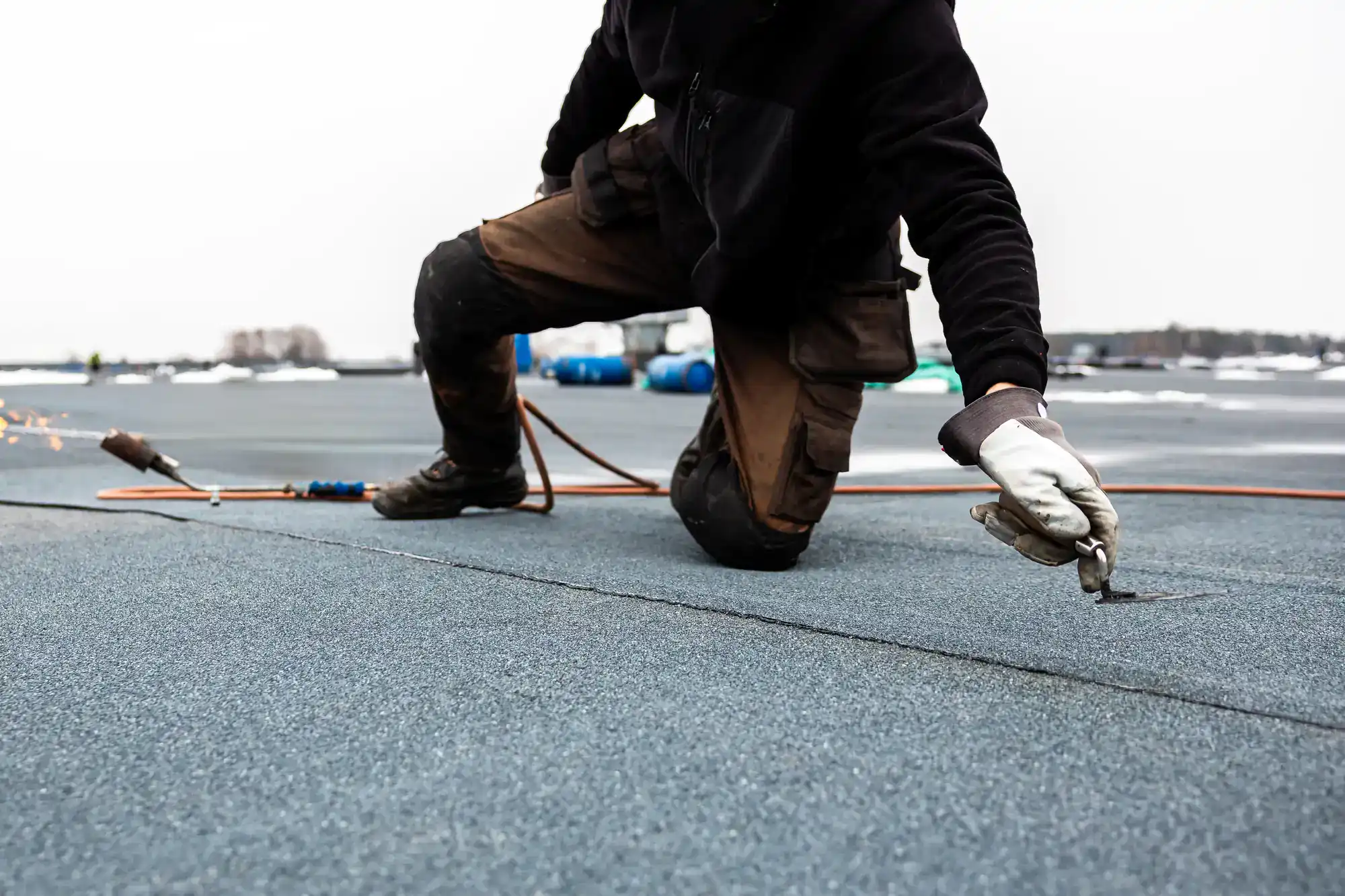
Hear from Our Customers
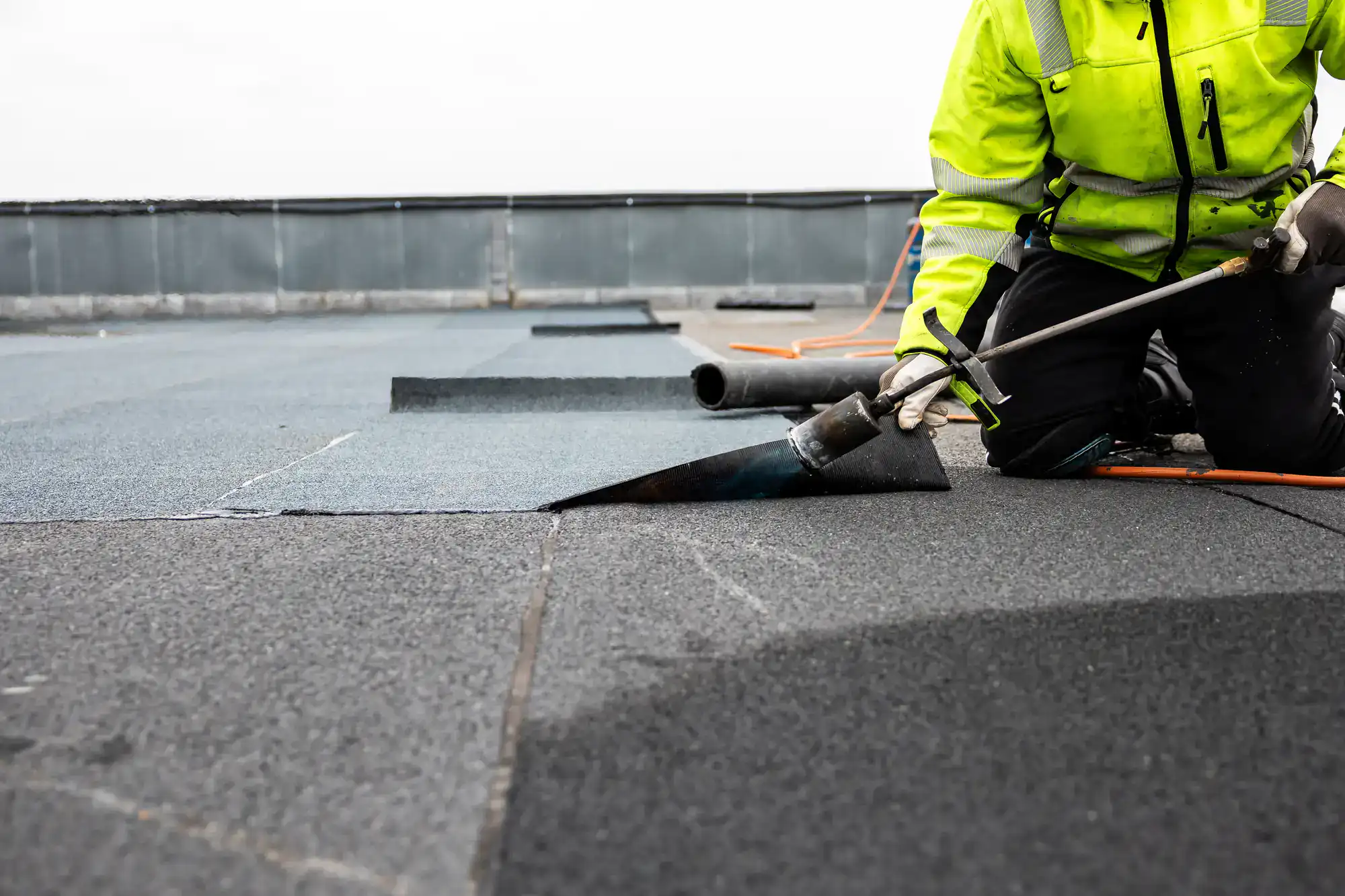
You’re not just getting a roof—you’re getting years of dry interiors and peace of mind. When your flat roof is installed correctly with the right materials, you stop dealing with emergency calls, water damage, and the stress of wondering if this storm will be the one that causes problems.
Your building stays protected through Sag Harbor’s harsh winters and humid summers. No more scheduling your life around potential leaks or worrying about expensive interior damage.
The right flat roofing system means you focus on your business or enjoy your home instead of constantly managing roof issues.
At Expressway Roofing and Chimney Inc, we understand what coastal weather does to flat roofs. We’ve seen how salt air, driving rain, and temperature swings affect different roofing materials—and we know which systems actually hold up in Sag Harbor’s climate.
We’re not the contractors who cut corners on flashing or use materials that can’t handle your local conditions. Our team stays current with Sag Harbor’s building codes and understands the specific challenges your property faces.
When you work with us, you’re getting contractors who’ve dealt with every type of flat roof problem this area throws at buildings.
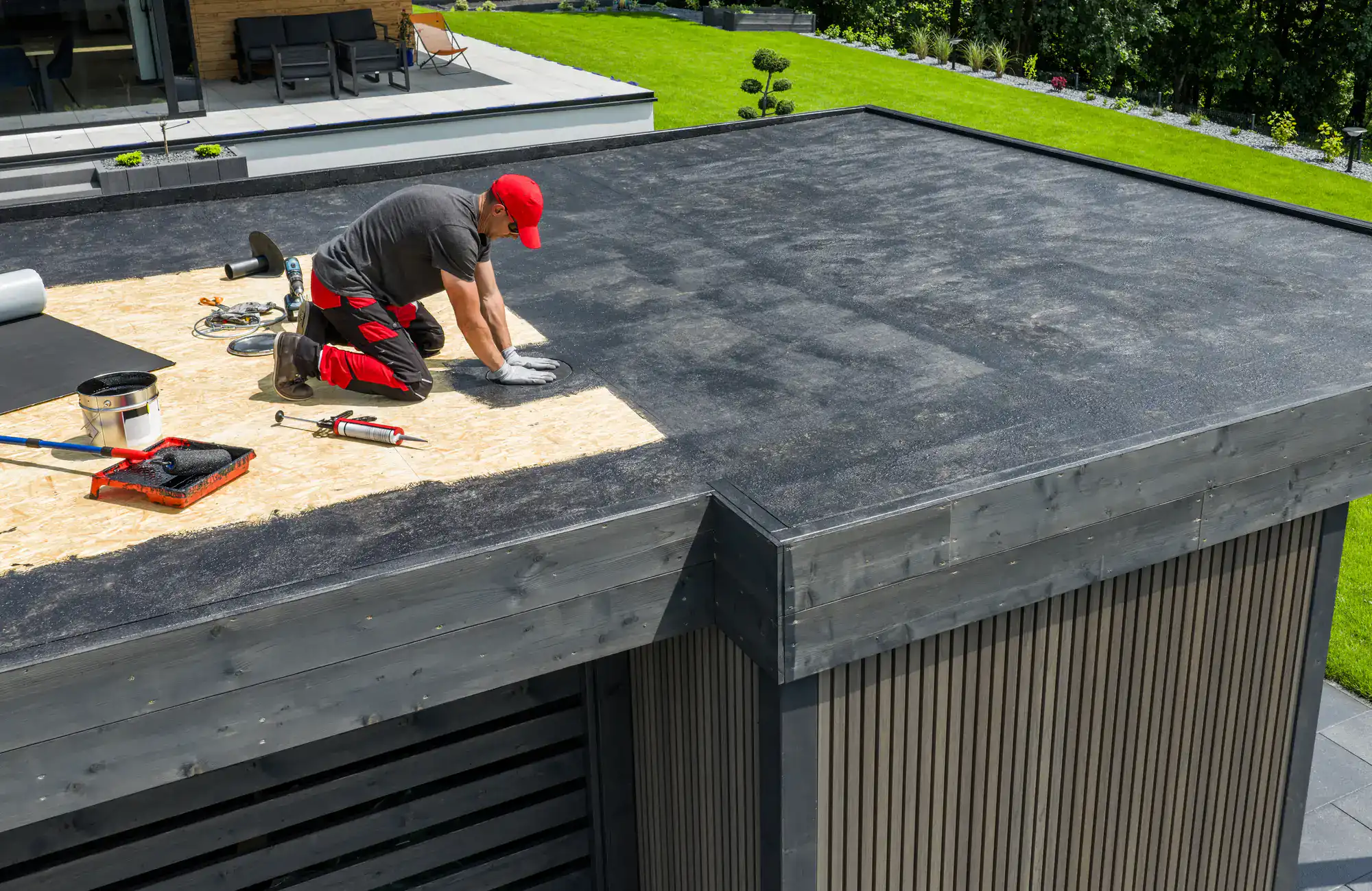
First, we inspect your current roof and identify the real problems—not just the obvious ones. We check for proper drainage, examine all penetrations and flashings, and assess whether repairs make sense or if replacement is your better option.
Next, we recommend the right system for your specific situation. TPO if you need energy efficiency and molecular welding strength. EPDM for flexibility and proven durability. Modified bitumen for smaller residential applications. We explain why each option works (or doesn’t) for your building.
Then we handle the installation with proper attention to the details that prevent future problems. That means correct flashing around all penetrations, proper drainage slopes, and seams that are actually sealed right. No shortcuts that come back to bite you later.
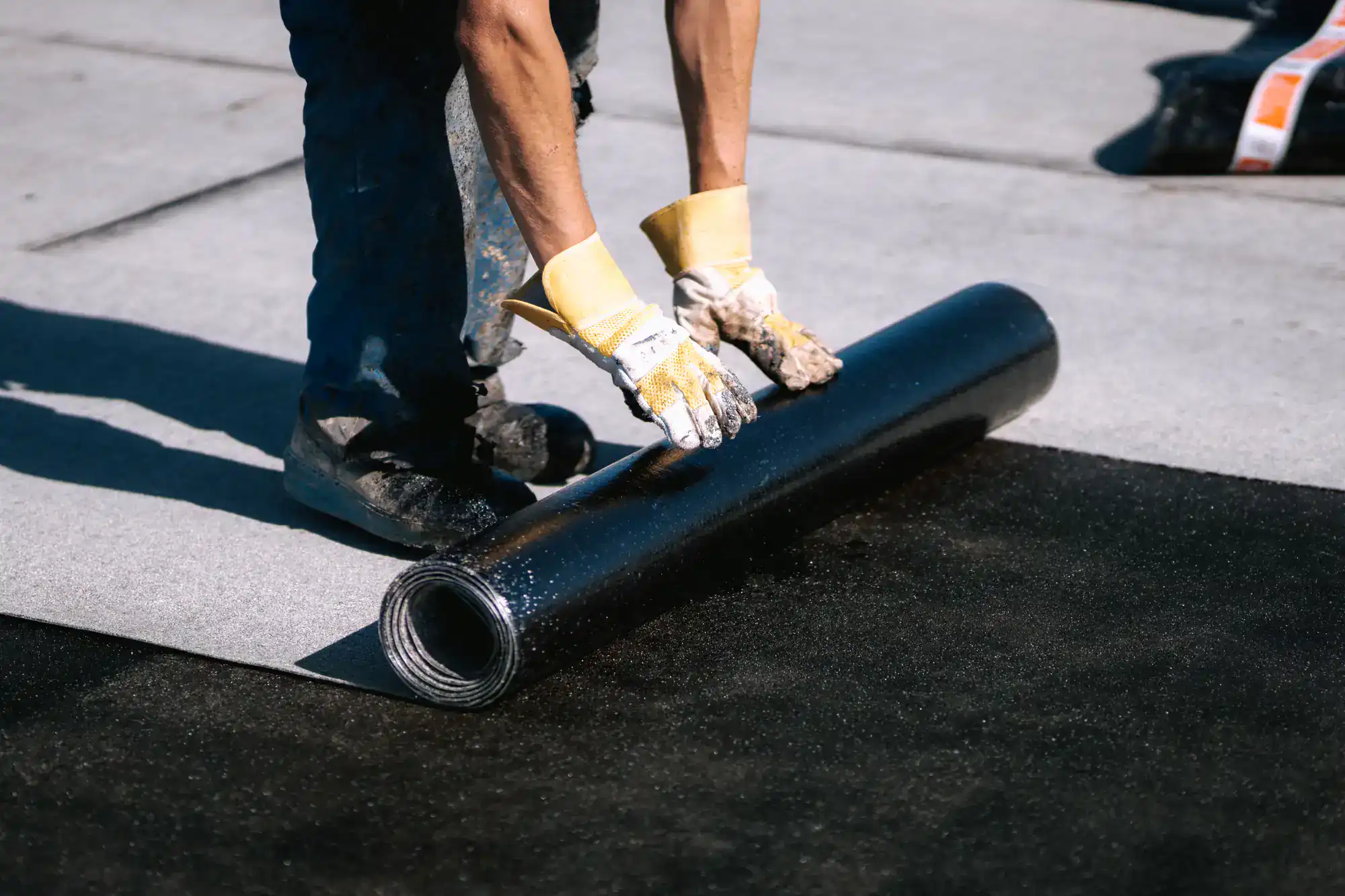
Ready to get started?
Not all flat roofing materials handle Sag Harbor’s coastal environment the same way. We use systems that are proven to work in salt air and high-moisture conditions.
EPDM rubber roofing gives you flexibility and can last 20-50 years when installed properly. It stays strong through temperature changes and won’t become brittle from sun exposure like cheaper alternatives.
TPO roofing offers excellent energy efficiency with its white, heat-reflective surface. The molecular welding process creates seams that won’t fail when coastal storms test your roof.
Modified bitumen works well for residential applications and smaller commercial buildings. It’s easier to handle than larger membrane systems but still provides reliable protection.
We also offer spray polyurethane foam systems that can go over existing roofs, combining insulation and waterproofing in one application—perfect when you want to avoid the disruption of a complete tear-off.
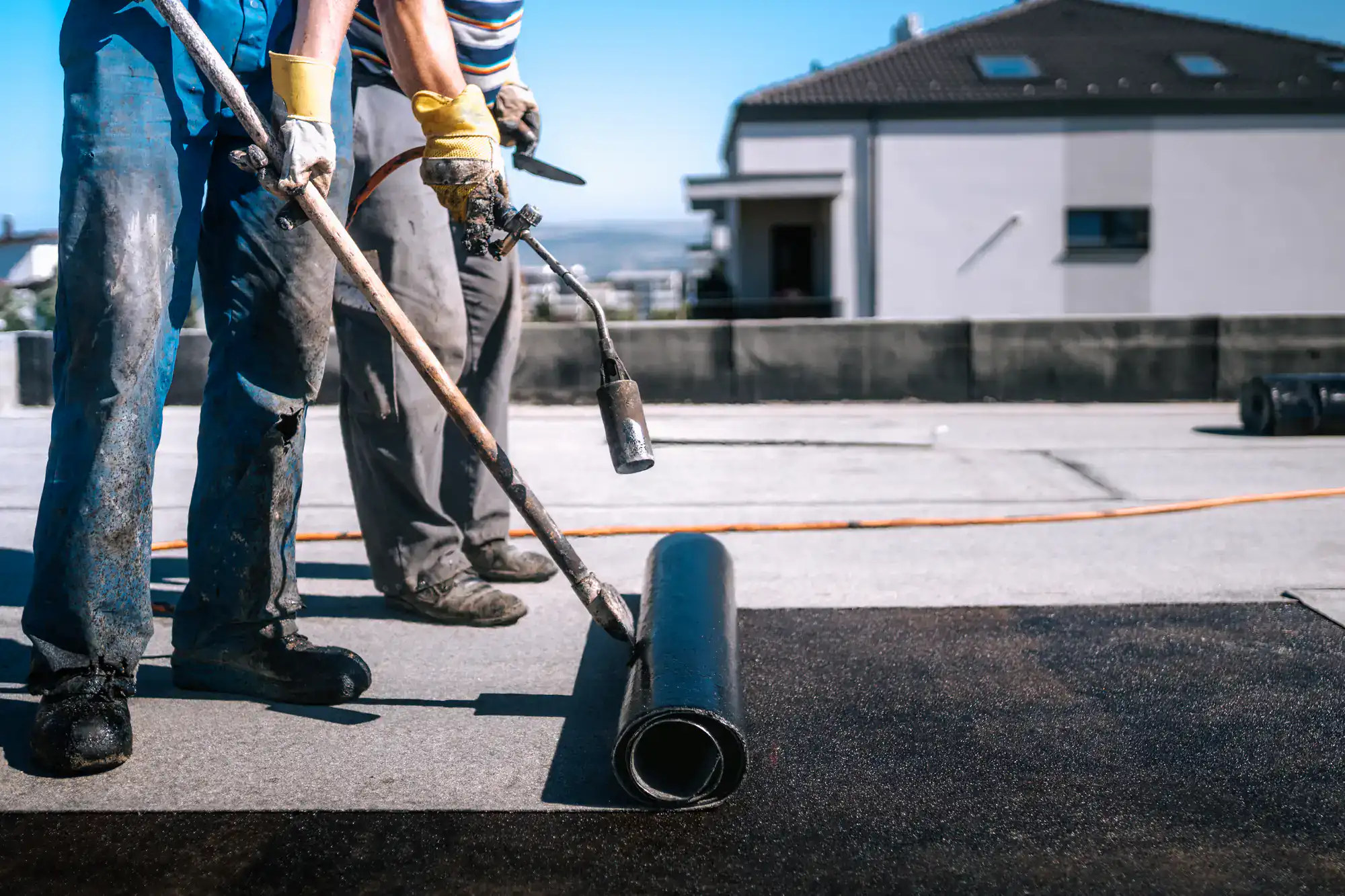
With quality materials and proper installation, your flat roof should last 15-30 years in Sag Harbor’s conditions. EPDM systems can go 20-50 years with good maintenance. The key is choosing materials that handle salt air and moisture, plus getting the installation details right the first time.
Coastal conditions do shorten roof life compared to inland areas. The salt air, high humidity, and temperature swings put extra stress on roofing materials. But when you invest in the right system and maintain it properly, you get decades of reliable protection.
The biggest factor isn’t the material choice—it’s the installation quality. Properly sealed penetrations, correct drainage, and attention to flashing details make the difference between a roof that lasts and one that gives you problems in a few years.
Almost all leaks come from incorrectly installed or missing flashing around penetrations and walls. This happens when contractors bid low and then cut corners on the detail work after the main roof field is installed.
Standing water is another major problem. If water sits on your roof for more than 24-48 hours, it will permanently damage those areas and void your warranty. Poor drainage design or clogged drains cause this issue.
The flashing work is where flat roofing gets technical. Vent penetrations, wall transitions, and equipment curbs need to be sealed properly with the right materials and techniques. Most roof failures happen at these connection points, not in the main membrane field.
It depends on your roof’s age, the extent of damage, and what’s causing the problems. If you have isolated issues and the membrane is in good condition overall, targeted repairs often make sense.
But if your roof is approaching 20 years old, has multiple problem areas, or the membrane is showing widespread deterioration, replacement is usually more cost-effective long-term.
Here’s what we look for: Are the problems concentrated in one area or spread across the roof? Is the membrane still flexible or becoming brittle? How’s the insulation underneath—dry or water-damaged? Are you dealing with a design problem that repairs won’t fix? A thorough inspection answers these questions and shows you the most practical path forward.
TPO and EPDM both perform well in coastal conditions, but for different reasons. TPO’s white surface reflects heat and the molecular welding creates incredibly strong seams. EPDM offers superior flexibility and has a proven track record in harsh climates.
For commercial applications, we often recommend TPO because of the energy efficiency and seam strength. The heat-welded seams won’t fail when coastal storms put stress on your roof.
EPDM works great for residential applications and situations where you need flexibility around irregular roof shapes. It handles temperature changes without becoming brittle and can be modified easily if you need to add equipment or make changes later.
Proper drainage design is critical from the start. Your roof needs adequate slope toward drains, and those drains need to be sized correctly for Sag Harbor’s rainfall patterns. Even “flat” roofs need at least 1/4 inch of slope per foot.
Regular maintenance prevents most drainage problems. Clean your drains and gutters at least twice a year, more during heavy debris seasons. Remove leaves, dirt, and anything else that blocks water flow.
If you already have standing water issues, solutions include adding drains in problem areas or installing tapered insulation to create proper slope. Don’t ignore standing water—it will destroy your roof and void your warranty. Address drainage problems before they become major roof replacement projects.
Yes, we provide emergency repair services when you have active leaks or storm damage. Flat roof emergencies can’t wait—water damage gets expensive fast and spreads quickly through building interiors.
We respond quickly to assess the situation and provide temporary protection while planning the permanent repair. Sometimes that means emergency tarping or temporary sealing until weather conditions allow proper repairs.
Our emergency services focus on stopping water intrusion immediately, then determining the best permanent solution. We don’t just patch the obvious problem—we identify what caused the failure and fix it properly so you don’t have repeat emergencies.